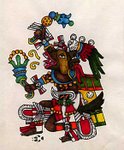-
Oakland Museum of
California
Día de Muertos
Exhibition:
Metamorphosis &
Migration
October 18, 2017 -
January 14, 2018
This year, OMCA’s biennial Days of the Dead exhibition is inspired
by the life cycle of the Monarch Butterfly. Known for its mass migration each
winter, this butterfly’s journey spans several generations, all of whom follow
the same routes their ancestors took. In Mexico, the returning Monarchs also
symbolize the returning souls of loved ones who have passed away.
In Metamorphosis &
Migration: Days of the Dead, explore
ofrendas and artworks inspired by the Monarch’s migration and themes of
tradition and transformation for reflection and empowerment in these turbulent
times. Metamorphosis & Migration,
guest curated by Evelyn Orantes, honors the departed and inspires the living in
an exploration of ancestral legacies and immigration stories of today. View
rarely seen butterfly specimens from OMCA’s collection alongside newly
commissioned artworks and ofrendas
by seven artists, including Jet Martinez, Rafael
Jesús González*, Fernando Escartiz, Bea Carrillo Hocker, Favianna
Rodriguez, Chris Treggiari and Peter Foucault, and others.

*
The piece by Rafael Jesús González is
titled “Ofrenda del Señor Xochipilli al Señor Mictlantecuhtli/Ofrenda of Lord
Xochipilli (god of art) to Lord Mictlantecuhtli (god of death)”.
It is an
Ofrenda to artists (and who is not an artist in some form or another? — we
sing, we dance, we sew, we make delectable food) who died in the process of
Migration, and in memory of Roberto Almanzán & Juan Domingo, founding members of
Xochpilli Chicano/Latino Men's Circle who died at the beginning of the year.
The piece breaks the usual
boundaries of sculpture, installation, conceptual art and blurs the
distinctions between the sacred and the profane. It denies the division between
the spiritual and the political. It is a statement of grief for the suffering
and deaths of migrants. It is a cry of outrage at the attacks upon immigrants
by our government whose foreign policies force migration.
The "ofrenda" is created
as fully as possible from recycled material, borrowed objects, and donations in
kind from the community. Whatever could be saved creating the installation is
placed upon the altar in the form of a cheque to be delivered to Causa Justa/Just
Cause, for its work in defense of immigrants, when the exhibit closes.
Don't miss our 23rd Annual Days of the Dead Community
Celebration on Sunday, October 22! Learn
more.
-





.jpg)
.jpg)


.jpg)











